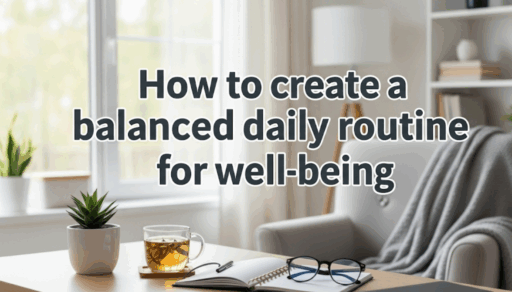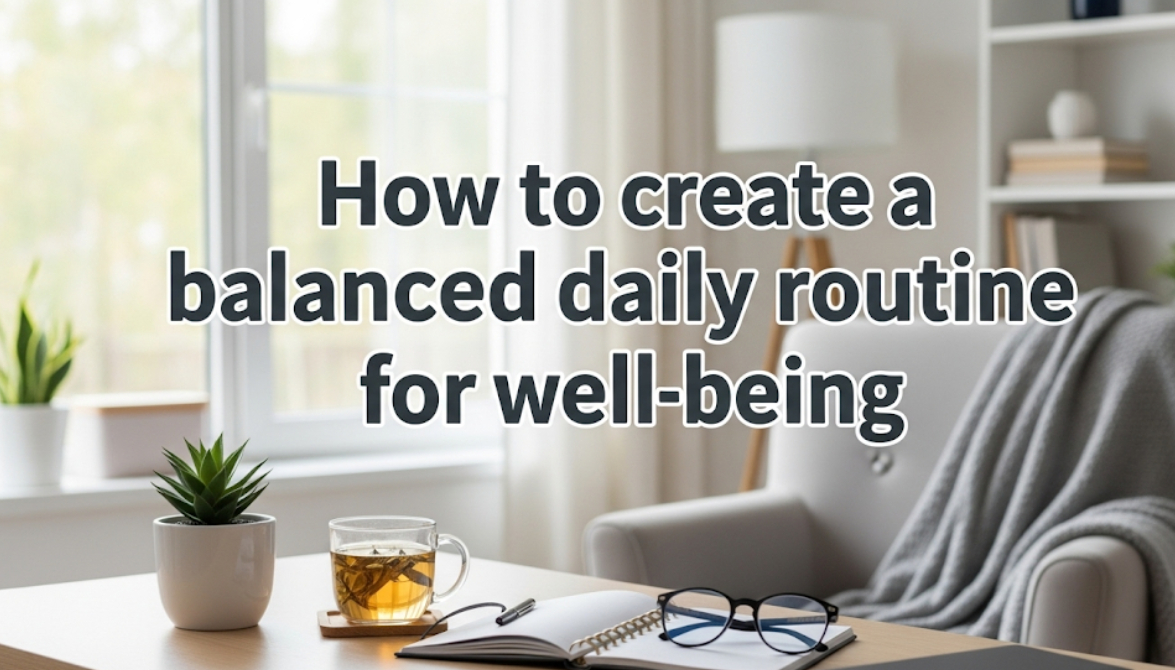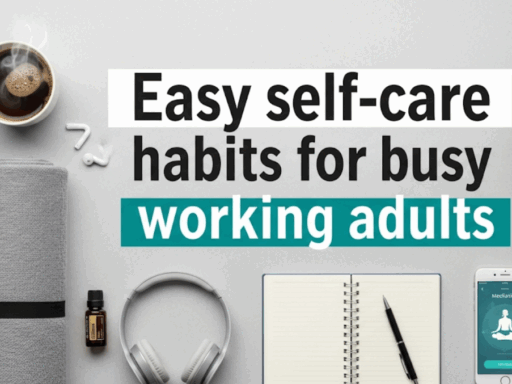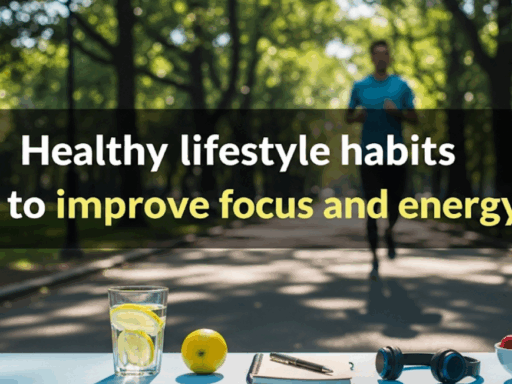Balancing Act: A Healthy Daily Routine and Well-being
Creating a good daily routine for your life can be daunting. You may be asking yourself how to get started, what exactly to do or even how to stay plugged in for the thereafter. The GREAT news is that you don’t have to be perfect, just intentional, flexible and consistent with small changes that will compound into major improvements in your well-being over time.
A purposefully-designed routine is your daily, personal map to a healthier life, more productivity, and overall happiness. Building healthy routines to fuel your day — instead of just survive in it and taking out all the stress from making choices that help reduce decision fatigue.
How Your Life Changes Through The Simple Act Of Everyday Routine
Written by: Derek Simnett
Your brain loves predictability. You free up your brain to work on more important stuff instead of making decisions every second of the day. This mental agility will impact your work performance like a BOSS, your personal relationships, and increase both control and clarity over your emotions.
Studies have shown that folks who stick to a consistent routine feel less stressed, get better sleep, and tend to maintain healthier habits over time. Your routine is the foundation that allows you to achieve your goals and cope with the challenges that life throws at you more resiliently.
The Science Behind Routine Benefits
Routines, scientists have discovered, put your brain on autopilot and use up less energy for everyday mundane tasks. This brainpower that is preserved could be put to use on endeavors such as creativity, problem-solving and joyous activities!
Having a routine also helps your body to keep its internal clock running smoothly, resulting in better quality of sleep and easier digestion along with sustained energy through the day. So, when your body rhythm is in sync with your daily schedule you feel more alert during work hours and wind down and relax.
Morning Routines that Lead to Success
The morning routine is like your first impression—it leads the way for everything else. Instead of tumbling through those sacred morning hours, craft a sequence to your morning that invigorates your body, awakens your mind and links you with the things most important to you.
Essential Morning Components
H2O FIRST THING: Kick off every day with a full glass of water. As you sit in your bed reading this, understand that you have been dehydrated at least for an hour now since you last drank water, and as your metabolism resets itself to its daily function, the first switch it wants to turn on is hydration. Top off with a lemon for an extra hit of vitamin C and digestion support.
Move: Physical exercise isn’t necessarily vigorous to be beneficial. Quick stretches, doing some yoga or even just a short walk around the block will get your blood pumping and release endorphins. Five minutes of moving changes your level of energy significantly.
Mindful Moments: Take a moment to be still in thought for meditation, contemplation, or breathing exercises. By doing so, you will be able to clear your head, calm down and tackle the day with more purpose and concentration. You can begin with as little as three to five minutes if you are a beginner at mindfulness practices.
Eat a Healthy Breakfast: Feed your body with protein-packed/balanced fats/complex carbs. The result of this combination is a constant stream of energy that prevents the mid-morning crash that results in wasted time.
Sample Morning Routine Timeline
| Time | Activities | Duration |
|---|---|---|
| 6:00 AM | Wake-up/Hydrate | 5 Minutes |
| 6:05 AM | Light Stretches | 10 Minutes |
| 6:15 AM | Shower/Get Dressed | 20 Minutes |
| 6:35 AM | Mindfulness Practice | 5 Minutes |
Work and Productivity Strategies
By structuring your work hours, you are able to focus better and can prevent burnout. It becomes about a combination of focused work periods, regular breaks and drawing clear lines between working time and personal time.
Time Blocking for Maximum Focus
Dedicate different blocks of time in your workday to different types of tasks. Where possible, couple activities that are the same, to minimize context switching (which can be mentally draining). For instance, address all emails during specific times instead of constantly checking throughout the day.
Do your high-energy work when you have the most energy—do your hardest or most important work. Note: most people experience a relative peak in the late morning, but take note of your specific rhythm and shift accordingly.
Research shows that the brain works in 90-minute cycles of high focus, followed by low periods when concentration wanes. Use this cyclical nature to allow yourself breaks every 90 minutes in order to stay at your peak performance.
Creating Healthy Work Boundaries
- Determine regular times to start work and to stop for the day
- Make an area of work you can walk away from at the end of the day
- Switch off work notifications during personal time
- Exercise the art of saying “no” to anything that does not match your top priorities
- Take frequent holiday days as part of the process to rest up, relax and implement change in order to come back with a new perspective
Physical Health Foundations
Your body is the vessel that you live out your experience in, so treating it with respect and care should be non-negotiable. This doesn’t mean spending hours at the gym—this means making healthy choices on a regular basis that support your body.
Daily Movement Goals
It is recommended that you aim for 30 minutes of moderate physical activity per day, but this can be broken into chunks. Stair climbing, parking further away from the entrance, bodyweight exercises during TV commercial breaks.
Resistance Exercise: Strength training basics—two-day-a-week resistance exercises to prevent muscle loss, bone loss and improve metabolic health. This does not mean that you need fancy equipment; movements like push-ups, squats and planks all provide superior results with bodyweight training.
Cardiovascular Health: Exercise that raises your heart rate improves circulation, lifts your spirits and helps with endurance. Cardiovascular exercise can be simply dancing, hiking fast with friends over the weekend or spending some active time playing with pets.
Nutrition Throughout the Day
Each meal should be comprised of lean protein, vegetables, healthy fats, and complex carbohydrates. Providing your body with a balance of fats, carbs, and protein helps to keep your blood sugar levels stable (which, in turn help you get energy from food).
Snack Smart: Keep some healthy treats on hand to prevent overeating processed snacks when hunger hits. Nuts, fruits, hummus with vegetables or Greek yogurt are examples of snacks that can provide energy without causing spikes and crashes.
Meal Prep Strategies
- Make proteins in bulk on weekend
- Wash and chop vegetables from shop
- Prepare grains in bulk and refrigerate
- Emergency freezer meals
Mental and Emotional Well-being Practices
Treat your mental health with the same care and attention you would give to any physical illness. Practices that we build into our daily life that help with emotional regulation, stress management, and cognitive function not only increase resiliency but bring ease of living.
Stress Management Techniques
Deep Breathing: When you are stressed, your breathing changes—becomes very shallow and fast. Slow deep breaths with gaps between breath indicate you are activating your body’s relaxation response—so you can get back to operating from a calmer state of being.
Progressive Muscle Relaxation: This relaxation method includes tensing and then relaxing different muscle groups in your body. It teaches you to detect muscle tension and train it to relax, thus helping both your mood and sleep.
Journaling for Mental Clarity: Writing those thoughts and concerns can allow you to process your emotions which is crucial in gaining perspective on daily issues—doing a bit everyday gives perspective over time. It does not even matter if you can only put pen to paper for five minutes, those 5 minutes alone are doing wonders for your mental health.
Building Emotional Intelligence
This first-hand experience introduces you to your personal emotional patterns and how they play out, helping you learn to respond rather than react when faced with the inevitable challenges we all encounter. Be aware of the types of things that set off your emotions, what your body feels like when you are in different emotional states and which methods assist you in returning to equilibrium.
Daily Emotional Check-ins
- Morning: How do I feel today?
- Noon: What have I felt so far today?
- Evening: What stirred up the most emotion in me today and how did I deal with it?
Sleep Optimization for Recovery
Sleep is when your body heals itself, memories get consolidated and prepares you for the next day. The absolute single best investment in your health that you can make is creating an environment and routine of sleep that leads to multiple, hours-long deep dive experiences a night.
Evening Wind-Down Rituals
Start winding down 1-2 hours before your planned bedtime. That period of transition signals to your body that it is time for the activity of daytime mode and transitions it over into restful nighttime mode.
Blue Light Boundaries: Technology without borders affects melatonin production. Set up a charging hub in another part of your room, and leave screens out if you can help it during the time before bed.
Replace stimulating activities with relaxing ones in your evenings. Spend your evening with relaxing activities (read a book, take a warm bath, stretch or listen to calm music).
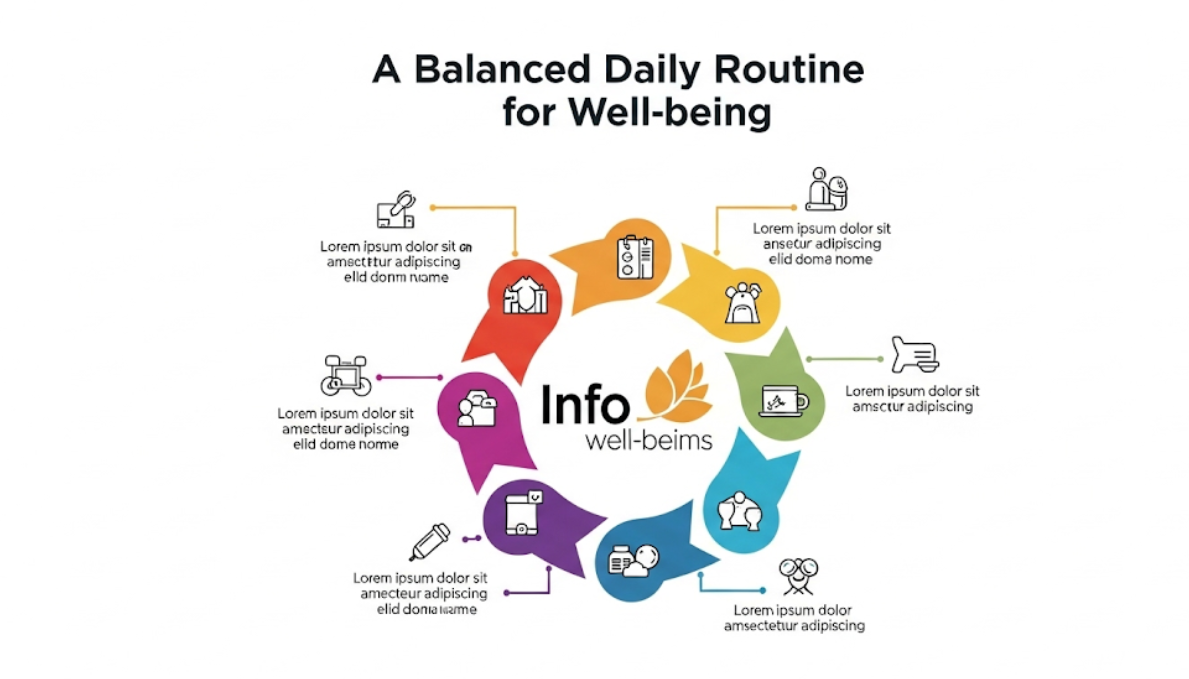
Sleep Environment Setup
| Element | Ideal Condition | Reason |
|---|---|---|
| Temperature | 65-68°F (18-20°C) | Cooler temps help you to sleep deeper |
| Darkness | Pitch black | Exposure to light inhibits melatonin |
| Noise | Silent or white noise | Unexpected sounds awaken sleep cycles |
| Comfort | Quality mattress and pillows | For a restful night’s sleep |
Social Connections and Relationships
As social creatures, we as humans need to have meaningful relationships for our physical and mental well-being. Social connections throughout your daily routine make for a supportive network of individuals and contribute to an overall satisfaction with life.
Daily Relationship Investments
Quality Conversations: Even in the face of screen addiction, remember to engage in quality conversations with those dear to you. Whether that is a phone call with a relative, coffee break with a coworker, or having all your focus on the dining table while you are eating dinner with your entire family.
Random Acts of Kindness: Small kind gestures are a win-win for both the giver and receiver! Text a friend to check on them, do a good deed for a neighbor or someone you know, smile at strangers passing by.
Serve Your Community: Get involved with the community to engage in impactful activities that benefit your local society. That could mean volunteering, joining clubs, going to local events or partaking in neighborhood activities.
Setting Healthy Social Boundaries
Social interactions do not always have a positive effect on your welfare. Determine which relationships or dynamics are energy drains for you, and learn to implement boundaries with kindness and compassion.
Routines of Flexibility and Adapting
Life is unpredictable and a routine that cannot bend a bit here or there as things unfold will not take you very far. It is useful to build some flexibility in your daily structure so that you can still maintain discipline even when things do not go according to the plan.
The 80/20 Rule for Routines
Don’t beat yourself up if you miss your routine only about 20% of the time, with a generous dose of grace for life’s little surprises. This way, when you don’t go through your normal routine, you are able to derive satisfaction out of committing to self-care daily.
Create Minimum Viable Routines: Craft condensed versions of your routines for when you travel or have especially demanding days. If for example your regular morning routine is about 45 minutes—take only the absolute essentials and create a shorter version in about 15 minutes.
Seasonal and Life Stage Adjustments
As your life changes, so too should the routine that centers you. Simply put, what works when you are in the thick of a busy work season may not be serving you when it is vacation time. Ongoing check-ins help verify your daily routines as an ongoing reflection of what you need and want in the present.
Quarterly Routine Reviews
- Where is my routine strong/weak?
- Where does my routine feel forced or not viable?
- What are my new priorities/circumstances?
- How could I be more flexible with myself considering my circumstances today?
Building Long-term Consistency
Long-lasting change takes time, self-kindness, and reasonable expectations. Instead of trying to change your whole life overnight, focus on creating just one small habit at a time.
Habit Stacking Strategy
Attach new habits to what you regularly do to improve your chances of sticking to them. For example, “When I brush my teeth, I will stretch for 5 minutes” or “When I pour a coffee in the morning, I will write something down in my gratitude journal.”
Tracking Progress Without Obsession
Take basic notes of your daily practice to pinpoint where you might be going off track and also keep a running log to acknowledge success. This could be as simple as putting an X on a calendar next to days that you hit the salient parts of your routine.
Recovery After Disrupting Your Flow
When you fall off the horse, get back on the path of growth instead of harping on missing days. You did not ruin weeks of progress with a bad day and the sooner you get back to your habits the less disrupted your routine becomes.
Your Personal Routine Action Plan
Finding your own equilibrium in how you structure your day is a journey of trial and error, perseverance, and realizing you are also human at the end. Take small steps and consistently work towards creating a life structure that is going to support you in all your needs and targets.
Keep in mind that there is no one-size-fits-all routine—just the one that aligns with your current life while leaving you invigorated, focused, and accomplished. As you begin implementing these new strategies, observe how different activities make you feel and consider your overall mental state.
One day, your future self will be so grateful that you incorporated daily practices into your life now, to ensure a healthy physical body + clear mind + balanced emotions. Every little move you make towards a life with both routine and intention is a step in that direction toward living a life of fulfillment.
Start with whatever one or two strategies resonate the most with you, and go from there. Small acts of consistency will lead to incredible things over time, and the same balance that you find in your daily routine is what you can use to lay the foundation to reach your wildest dreams and live out your best self.
